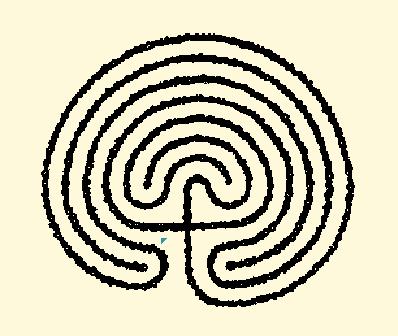Sister Anne Gabriel Edgeworth, CSJ
b. Syracuse, New York, 26 February 1914
d. St. Joseph Provincial House, 24 October 2004
We three, Dot (or Dorth, Helen's niece, Mary's aunt, Sister Dorothy Anne Flood), and another CSJ Sister Phyllis were at Helen's bedside when she died. Other nuns came in and out of Room 430. We sang songs, reminisced, waited, prayed. Helen seemed comfortable, helped by oxygen, apparently not conscious, or at least not responding (except for an occasional smile?), at least for the two and a half hours that we were there, called away from a "Generations of Faith" program at which Mary told a story (the phone call from Dot to come to the PH came in the middle of it) and I was to show some of
my Java applets (Jude took over this task after we left). My
"Time, Talent, and Treasure" talk was not scheduled, and in any case would not be given.
I think I first met Aunt Helen at her 50th Jubilee celebration in Rome, NY. One of the gifts given to 50th Jubilarians at the time was a trip to the mother house in St. Louis. It would be Helen's first airplane ride. She asked what gifts she could bring back, and among other things was told that from boyhood I had been a fan of the St. Louis Cardinals. It was quite amusing to everybody (except to her, who was never told) when she returned and gave me my "surprise" gift of a red T-shirt showing a St. Louis Cardinal football helmet. I wore the shirt quite often, and it gave Helen great pleasure to see it on me.
Later, Dot and Helen flew to Hawaii with us (Helen's only visit -- Dot made several more). We left Albany the morning of July 4, and enjoyed a picnic with Mom and Dad and Mike and Cherie on Ala Moana Beach, watching the sunset and the several dinner cruises on the Pacific, 6 p.m. HST, 12 midnight in Albany. On that trip Mom and Dad took us to the Big Island and to Kauai (the flight from the Big Island to Kauai stopped in Maui, thus enabling Mary to go to the bathroom on three islands that day). Dot was concerned because Helen seemed to be "slowing down"; that was two decades ago; a lot of life and fun, including Olivia, were still to come. Helen enjoyed strawberry milkshakes, but her favorite drink by far was a Manhattan, which we served Helen in our home, ordered for her in restaurants, and brought to her in travelers' mugs to the "PH" (the Sisters of St. Joseph of Carondolet Provincial House in Latham, which I nicknamed
Place Hélène). One of the songs we used to sing with Helen on our car trips with her and Dot was:
Show me the way to go home,
I'm tired and I want to go to bed.
I had a little drink about an hour ago,
And it's gone right to my head.
Wherever I may roam,
On land or sea or foam.
You will always hear me singing this song:
Show me the way to go home.
And so it was, except that in her last months Helen had even stopped drinking Manhattans. The wake will probably be on Tuesday, the funeral on Wednesday. We will be seeing Murphys. God bless Helen, her family and friends, and all CSJs. Sancte Ioseph, ora pro nobis.







